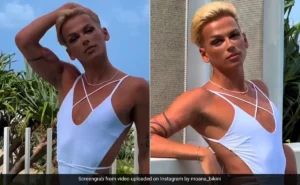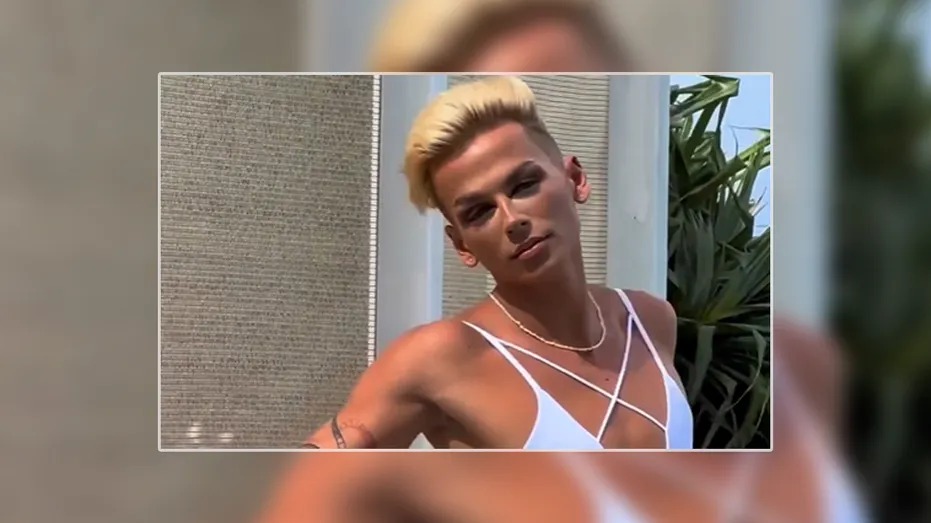Introduction to the Moana Bikini Male Model Trend
The emergence of male models showcasing Moana-themed bikinis represents a notable shift within the fashion industry, emphasizing a broader acceptance of diverse gender expressions in clothing. This trend can be traced back to the cultural impact of Disney’s Moana, which not only charmed audiences with its storyline but also broadened the scope of representation in animated films. The character of Moana, with her strong spirit and connection to her roots, has become a symbol of empowerment and inclusivity. This influence is palpable in the fashion domain, leading to a reimagining of traditional swimwear aesthetics and a celebration of creativity in gender-neutral styles.
The rise of gender-neutral fashion is another crucial aspect of this phenomenon. As societal norms evolve, many brands are beginning to dismantle the boundaries that once defined men’s and women’s clothing. This transition is particularly evident in the increasing variety of swimwear options available to male models. Notably, the Moana bikini trend reflects a push towards greater inclusivity, allowing individuals regardless of age or gender identity to express themselves freely through fashion. Male models, irrespective of their age, are now seen confidently exhibiting Moana-inspired bikinis, which challenges conventional gender roles and promotes a spirit of authenticity.
The Age Factor in Male Modelling: From Young Adults to Mature Models
In the world of male modeling, age can significantly influence a model’s appeal and marketability. With the rising popularity of niche trends such as the Moana bikini male model, we are witnessing a shift in societal perceptions regarding age in fashion. Traditionally, the modeling industry has seen a preference for younger individuals, often underpinned by the idea that youth correlates with vitality and desirability. However, this perception is gradually evolving, as evidenced by an increasing number of male models over 30 years who are successfully embracing contemporary trends.
The Moana bikini phenomenon exemplifies this change. Male models of various age groups are now stepping into roles that previously may have been dominated by younger counterparts. The appeal of the Moana aesthetic—characterized by vibrant colors and cultural motifs—allows models of all ages to showcase not only their physical attributes but also their personality and self-confidence, essential qualities in the modeling industry today. Models in their late twenties and early thirties have achieved notable success, often being perceived as more relatable and mature, appealing to a broader consumer base.
Furthermore, older models are increasingly challenging the dynamics of traditional modeling expectations by demonstrating that style and fashion are not confined to youth. This trend is supported by campaigns that feature older male models in various swimwear collections, including those mirroring the Moana bikini style. These models often bring with them a wealth of experience, versatility, and a new perspective on self-presentation that resonates with audiences. Notably, the diverse representation of ages in modeling fosters an inclusive environment that considers the individuality of beauty, making fashion approachable to various demographics.
In conclusion, as the world of male modeling continuously evolves, age has become a less confining factor in defining a model’s success or appeal. The Moana bikini male model age debate emphasizes a broader movement toward inclusive representation, where both youth and maturity can thrive within the same trend. The changing landscape not only reflects societal shifts but also presents an opportunity for models of all ages to find their place in the fashion industry.
Behind the Scenes: The Making of Moana Bikini Campaigns
The Moana bikini campaigns featuring male models represent a unique intersection of creativity, fashion, and cultural storytelling. These campaigns often begin with a conceptualization phase where designers, photographers, and marketing teams gather to define their vision. They aim to capture the essence of Moana’s character—a symbol of empowerment, strength, and adventure—translating these attributes into a vibrant and appealing bikini line for male audiences.
During the preparatory stages, models selected for these shoots undergo rigorous training to embody the essence of Moana while presenting their own unique personas. This preparation often includes fitness routines tailored to enhance their physique, ensuring they resonate with the active, adventurous spirit reflected in the Moana theme. A model’s age can influence their approach and athleticism, allowing for diverse body representations that align with current fashion trends.

The actual photo shoots are meticulously planned, with attention given to location, lighting, and thematic elements that echo the tropical and vibrant environment depicted in the Moana movie. The male models, embodying a beach-ready aesthetic, work closely with photographers to produce imagery that not only showcases the bikini but also tells a story of adventure and exploration. Each pose is carefully curated to highlight the versatility and comfort of the swimwear, appealing to a modern audience seeking both style and functionality.
Collaboration between designers and male models is crucial, as it fosters a creative synergy that enhances the overall impact of the campaign. The models often provide feedback on the designs, ensuring that each piece not only fits well but allows for maximum movement and comfort. Through these collaborative efforts, the Moana bikini line continues to evolve, celebrating the spirit of adventure and inviting male consumers to immerse themselves in the world of Moana.
Cultural and Market Impact of Moana Bikini Male Models
In recent years, the emergence of male models showcasing Moana-themed bikinis has sparked significant conversations around body image and gender representation within the fashion industry. Traditionally, swimwear advertising has leaned heavily towards idealized, often unattainable representations of male bodies, promoting narrow standards of masculinity. However, the rise of Moana bikini male models has coincided with a broader cultural shift towards inclusivity and diversity in marketing. As audiences become more vocal about their preferences for varied body types, these representations respond to an evolving societal landscape.
The portrayal of male models in Moana-themed swimwear emphasizes a more balanced view of masculinity. By featuring models of different ages, shapes, and ethnic backgrounds, the industry facilitates a discussion about the importance of body positivity, thereby encouraging individuals to embrace their bodies. This inclusive representation resonates well with consumers who increasingly seek connection with relatable figures in fashion advertising, and this trend’s popularity correlates directly with heightened consumer engagement and brand loyalty.
Moreover, the market’s reaction to the Moana bikini male model phenomenon illustrates a compelling trend. Fashion brands that incorporate diverse male representations in their advertising campaigns have observed a noticeable increase in sales. Customers are not only drawn to the products but also appreciate the values they represent—authenticity, diversity, and inclusivity. This shift may inform future campaigns, steering them towards embracing gender-neutral fashion that appeals to a wider audience, including all ages and body types.
As we analyze current trends, it is evident that the Moana bikini male model’s cultural impact goes beyond mere aesthetic appeal; it is redefining industry norms and consumer expectations. In conclusion, the solidarity of these themes suggests a promising future for male modeling, paving the way for greater representation and acceptance within fashion advertisements.
